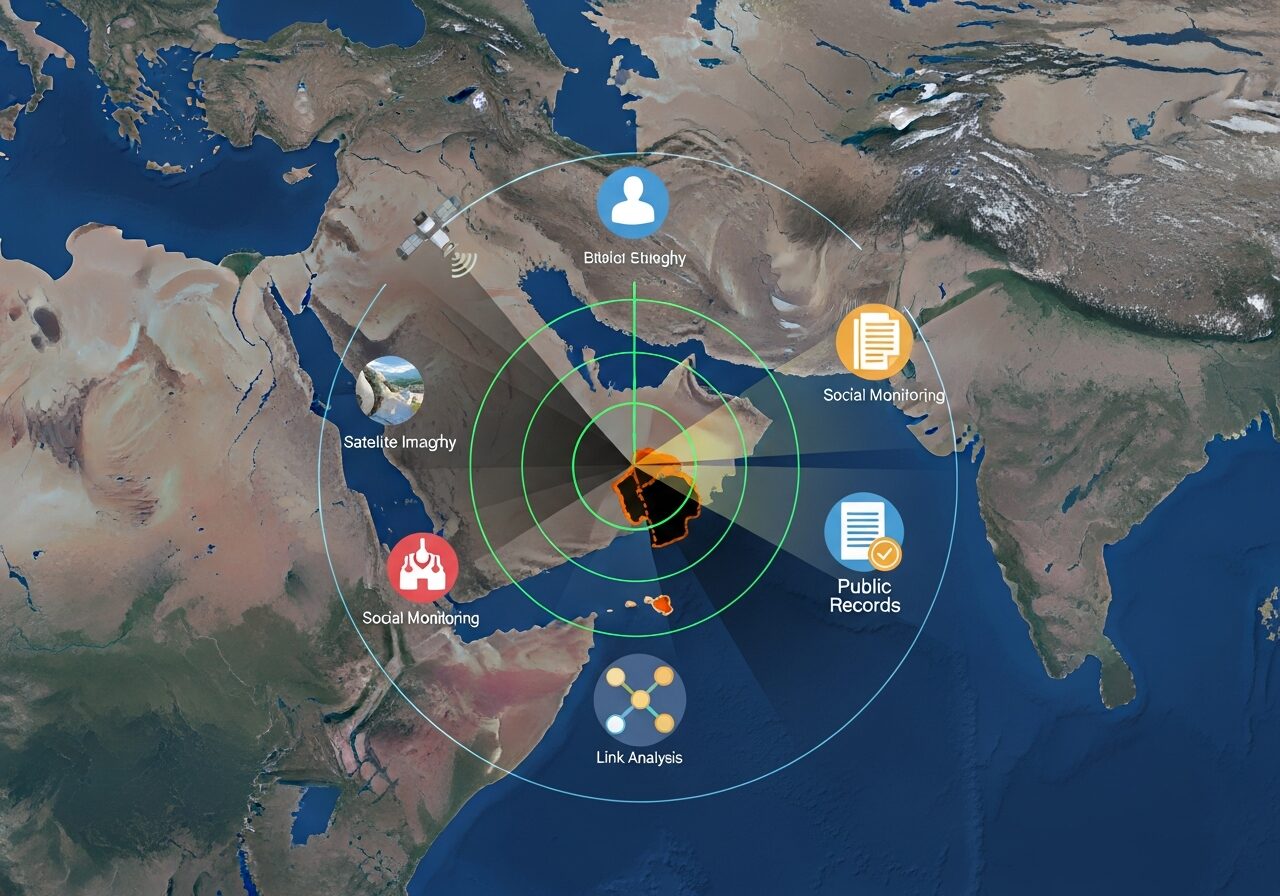Let me tell you something that keeps corporate security teams up at night: it’s not always your own security posture that gets you breached—it’s your vendors. I’ve spent over 20 years in offensive security, and I can’t count how many times I’ve walked into a Fortune 500 company through a third-party vendor’s weak link. The Target breach? Vendor. The SolarWinds attack? Supply chain compromise. The pattern is crystal clear.
Here’s the kicker: most organizations are still doing vendor risk assessments like it’s 2010. They’re checking boxes on compliance forms while attackers are mining open-source intelligence (OSINT) to find the exact same vulnerabilities that will be exploited six months later. If you’re not using OSINT to vet your vendors, you’re essentially trusting a stranger with your house keys because they said they’re trustworthy.
In this guide, I’m going to show you exactly how to use OSINT to uncover hidden security gaps in your third-party vendors before they become your next breach headline. No fluff, no theory—just practical techniques I’ve used in real-world engagements.
Why Traditional Vendor Risk Assessments Are Failing
Traditional vendor risk management relies heavily on questionnaires, certifications, and periodic audits. Sounds good on paper, right? Wrong. Here’s why this approach is fundamentally broken:
The Compliance Theater Problem
Vendors know exactly what you want to hear. They’ll check every box, provide every certification, and tell you their security is “enterprise-grade.” Meanwhile, their actual security posture might be held together with duct tape and prayers. I’ve seen companies with SOC 2 Type II certifications that had publicly exposed databases containing customer data. The certification was real; the security was theater.
The Time Lag Issue
By the time you receive a completed security questionnaire, review it, and make a decision, the information is already outdated. That “no known breaches” answer from three months ago? They got hit by ransomware last week, but you won’t know until it’s too late—and it affects your data.
The Visibility Gap
Traditional assessments only show you what vendors want you to see. They don’t reveal:
- Exposed credentials on paste sites
- Misconfigured cloud storage buckets
- Employee security awareness (or lack thereof)
- Shadow IT and unauthorized services
- Real-time threat intelligence about active targeting
This is where OSINT becomes your secret weapon. Learn more about how OSINT transforms corporate risk detection in modern security operations.

The OSINT Vendor Risk Assessment Framework
Let me walk you through a systematic approach to vendor risk assessment using OSINT. This is the same framework I use when conducting third-party risk evaluations for clients.
Phase 1: Digital Footprint Reconnaissance
Start by mapping your vendor’s entire digital presence. This isn’t about being creepy—it’s about understanding what attackers already know.
Domain and Subdomain Enumeration
Use tools like Amass, Subfinder, or even simple Google dorking to discover all domains and subdomains associated with your vendor. I once found a vendor’s staging environment completely exposed because of a forgotten subdomain. It contained API keys, database credentials, and customer data. The vendor had no idea it existed.
Key areas to investigate:
- Primary domains and all subdomains
- Development and staging environments
- Legacy domains and acquisitions
- Third-party services and integrations
- Cloud storage buckets (S3, Azure Blob, etc.)
Exposed Credentials and Data Leaks
Check breach databases and paste sites for exposed credentials. Tools like Kindi can automate this process, continuously monitoring for leaked credentials associated with your vendor’s domains. This is non-negotiable—if your vendor’s admin credentials are sitting on a Russian forum, you need to know about it before onboarding them.
Phase 2: Security Posture Analysis
Now that you know what’s out there, it’s time to assess the actual security posture.
External Attack Surface Assessment
Scan for:
- Open ports and services
- Outdated software versions
- Missing security headers
- SSL/TLS misconfigurations
- Exposed administrative interfaces
I’m not suggesting you run aggressive vulnerability scans against vendors (that’s probably illegal and definitely unethical), but passive reconnaissance and publicly available security scanning services can reveal a lot. If their public-facing infrastructure is a mess, imagine what’s behind the firewall.
Employee Security Awareness
This is where social media OSINT becomes invaluable. Check LinkedIn, Twitter, and other platforms for:
- Employees discussing internal tools and technologies
- Screenshots containing sensitive information
- Job postings revealing security stack details
- Complaints about security policies (or lack thereof)
I once identified a vendor as high-risk because their developers were publicly complaining on Reddit about being forced to disable MFA because it was “too inconvenient.” That vendor didn’t make the cut.

Phase 3: Threat Intelligence Integration
Understanding if your vendor is currently being targeted or has been compromised is critical.
Dark Web and Underground Forum Monitoring
Monitor dark web forums and marketplaces for:
- Mentions of the vendor’s name
- Stolen credentials for sale
- Discussions about vulnerabilities
- Ransomware group targeting
This is where OSINT for corporate investigations becomes essential. You need to know if threat actors are actively discussing your potential vendor.
Historical Breach Analysis
Research the vendor’s breach history:
- Have they been breached before?
- How did they respond?
- What was the root cause?
- Have they fixed the underlying issues?
A previous breach isn’t necessarily disqualifying, but how they handled it tells you everything about their security culture. Did they notify customers promptly? Did they conduct a thorough post-mortem? Or did they try to sweep it under the rug?
Red Flags That Should Disqualify Vendors Immediately
In my experience, certain findings should be automatic deal-breakers:
- Active Credential Leaks: If current employee credentials are available on breach databases or paste sites, walk away. This indicates either a recent breach they haven’t disclosed or catastrophically poor password hygiene.
- Exposed Customer Data: Finding customer data in publicly accessible locations (misconfigured S3 buckets, exposed databases, etc.) is a massive red flag. If they can’t protect their current customers’ data, they won’t protect yours.
- Lack of Basic Security Hygiene: No HTTPS, missing security headers, outdated software versions on public-facing systems—these indicate a fundamental lack of security awareness.
- Dishonesty in Questionnaires: If your OSINT findings contradict their security questionnaire responses, that’s not just a security issue—it’s a trust issue.
- Active Targeting by Threat Actors: If ransomware groups or APTs are actively discussing targeting this vendor, you need to seriously reconsider the relationship or implement additional controls.
Implementing Continuous Vendor Monitoring
Here’s something most organizations get wrong: vendor risk assessment isn’t a one-time event. Security postures change, breaches happen, and new vulnerabilities emerge. You need continuous monitoring.
Automated OSINT Monitoring
Set up automated monitoring for:
- New subdomain discoveries
- Certificate transparency logs
- Breach database additions
- Dark web mentions
- Social media security incidents
Kindi excels at this kind of continuous monitoring, providing real-time alerts when new risks emerge related to your vendors. It’s like having a 24/7 security analyst dedicated to vendor risk.
Quarterly Deep Dives
Conduct comprehensive OSINT assessments quarterly:
- Review changes in digital footprint
- Assess new security incidents
- Evaluate employee turnover (high turnover in security roles is a red flag)
- Check for new regulatory violations or lawsuits
Incident Response Integration
When a vendor experiences a security incident, your OSINT capabilities should kick into high gear:
- What data was compromised?
- What’s the blast radius?
- Are your systems affected?
- What’s the vendor’s response timeline?
Understanding supply chain cyber attacks helps you prepare for and respond to vendor-related incidents effectively.

Building an OSINT-Powered Vendor Risk Program
Let me give you a practical roadmap for implementing this in your organization:
Step 1: Inventory Your Vendors
You can’t protect what you don’t know about. Create a comprehensive inventory of all third-party vendors, including:
- Shadow IT and unauthorized services
- Vendors of vendors (fourth-party risk)
- Legacy vendors that might still have access
Step 2: Risk Tier Your Vendors
Not all vendors pose equal risk. Categorize them based on:
- Access to sensitive data
- Integration depth with your systems
- Criticality to business operations
- Regulatory implications
Step 3: Implement OSINT Tooling
Deploy a combination of:
- Commercial OSINT platforms like Kindi
- Open-source tools for specific use cases
- Custom scripts for unique requirements
- Threat intelligence feeds
Step 4: Establish Monitoring Cadences
- Critical vendors: Weekly automated scans, monthly deep dives
- High-risk vendors: Bi-weekly automated scans, quarterly reviews
- Medium-risk vendors: Monthly automated scans, semi-annual reviews
- Low-risk vendors: Quarterly automated scans, annual reviews
Step 5: Create Response Playbooks
Define clear actions for different risk levels:
- What triggers a vendor review?
- Who needs to be notified?
- What are the escalation paths?
- When do you terminate a vendor relationship?
Real-World Case Study: The Vendor That Didn’t Make the Cut
Let me share a real example (details changed to protect the innocent and guilty alike). A financial services client was evaluating a new payment processing vendor. The vendor had impressive credentials, great references, and competitive pricing. They were the frontrunner.
During our OSINT assessment, we discovered:
- A subdomain running an outdated WordPress installation with known vulnerabilities
- Employee credentials from a 2023 breach still active and unchanged
- A GitHub repository containing API keys and database connection strings
- Dark web forum posts discussing the vendor as a potential target
We presented these findings to the client. The vendor’s response? “Those are isolated issues that don’t affect our production environment.” That was a lie—the GitHub repository contained production credentials.
The client walked away from the deal. Three months later, that vendor was hit by ransomware. The client dodged a bullet that would have cost them millions in breach response, regulatory fines, and reputation damage.
The Future of Vendor Risk Management
The vendor risk landscape is evolving rapidly. Here’s what I’m seeing on the horizon:
AI-Powered Risk Scoring
Machine learning models will increasingly analyze OSINT data to provide real-time risk scores for vendors. This isn’t science fiction—it’s happening now with platforms like Kindi that use AI to correlate disparate data points and identify emerging risks.
Blockchain-Based Vendor Verification
Immutable records of security assessments and certifications will make it harder for vendors to misrepresent their security posture. We’re already seeing early implementations in supply chain security.
Regulatory Pressure
Expect increased regulatory requirements around third-party risk management. The SEC’s cybersecurity disclosure rules are just the beginning. Organizations will need to demonstrate due diligence in vendor selection and monitoring.
Conclusion: OSINT Is Your Competitive Advantage
Here’s the bottom line: in 2025, vendor risk management without OSINT is negligent. The information is out there, attackers are using it, and if you’re not, you’re bringing a knife to a gunfight.
The organizations that will thrive are those that embrace OSINT as a core component of their vendor risk programs. They’ll catch problems before they become breaches, make informed decisions based on real-world security posture rather than marketing materials, and sleep better at night knowing they’ve done their due diligence.
Start small if you need to. Pick your most critical vendor and run through the framework I’ve outlined. I guarantee you’ll find something that makes you reconsider the relationship—or at least implement additional controls.
The question isn’t whether you can afford to implement OSINT-powered vendor risk management. The question is whether you can afford not to. Because I promise you, your next breach is probably going to come through a vendor. The only question is whether you’ll see it coming.
Want to get started with automated vendor risk monitoring? Check out our OSINT courses for hands-on training. And explore Kindi — our AI-driven OSINT platform built for speed and precision. You would love it.



